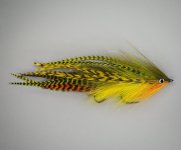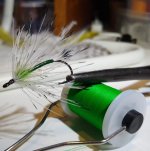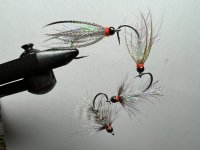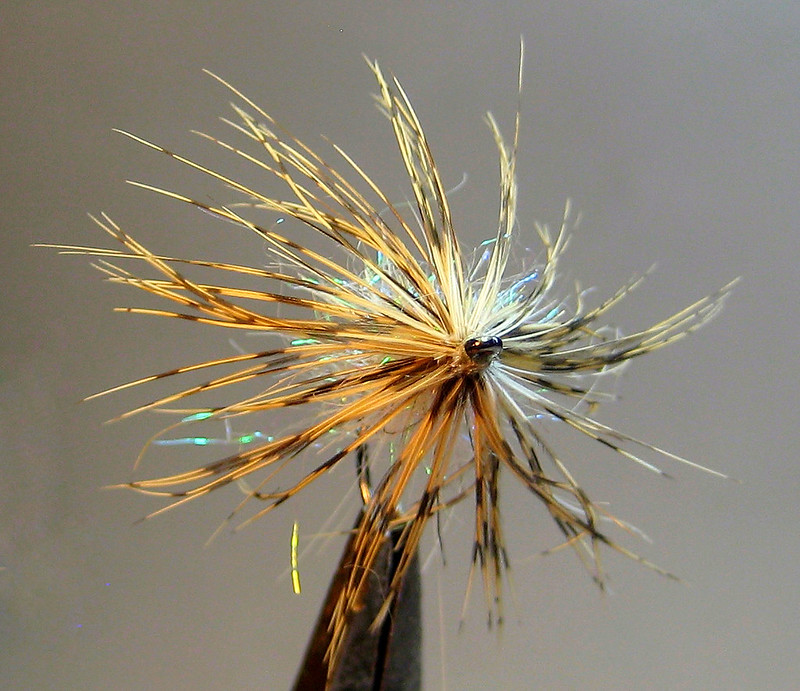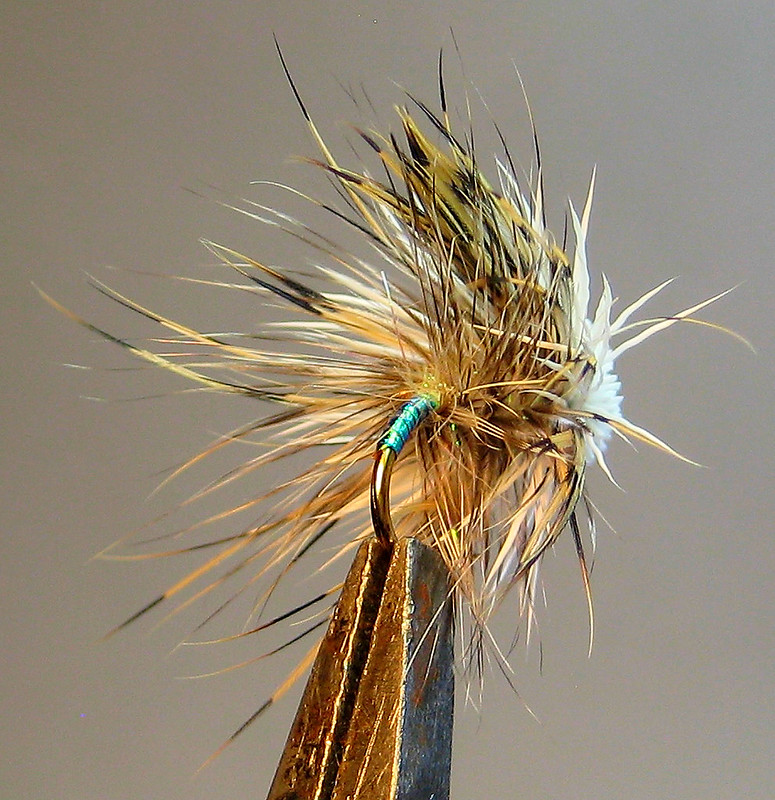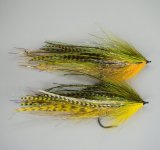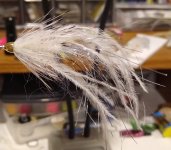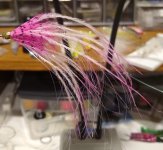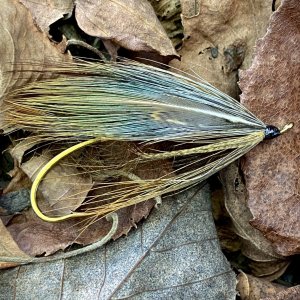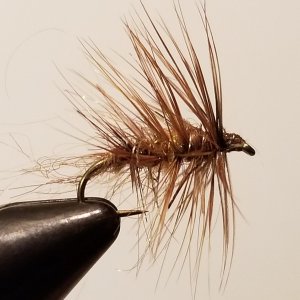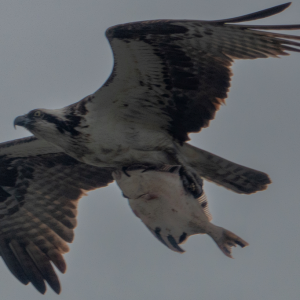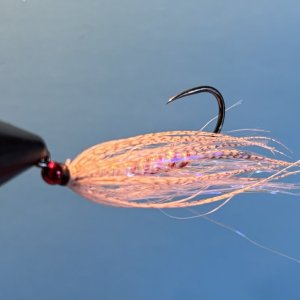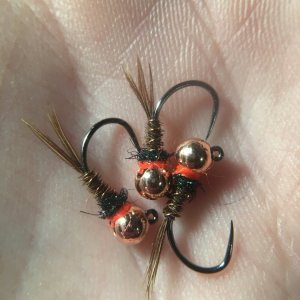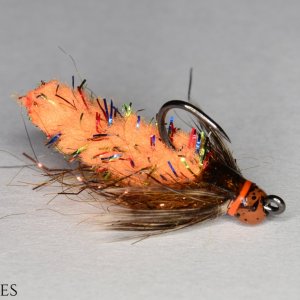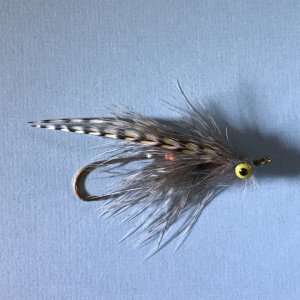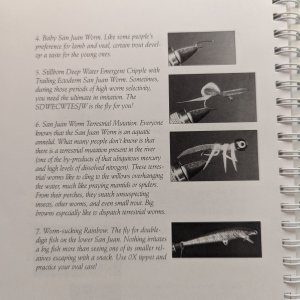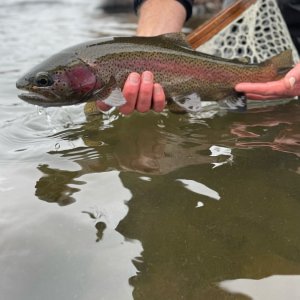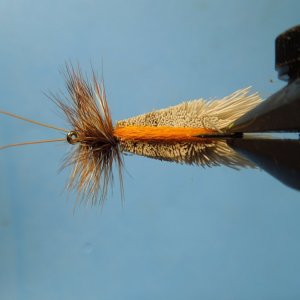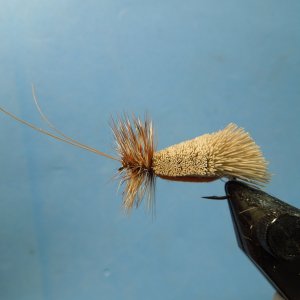You are using an out of date browser. It may not display this or other websites correctly.
You should upgrade or use an alternative browser.
You should upgrade or use an alternative browser.
What's in your vise?
- Thread starter Billy
- Start date
Nice! Your design?
Scudley Do Right
Life of the Party
Jack Devlin
Life of the Party
The Kutling is a Danish Sea Trout pattern. Not sure who/where the Spider comes from.Nice! Your design?
Scottp
Legend
BRF Grouse & Pink (variation)
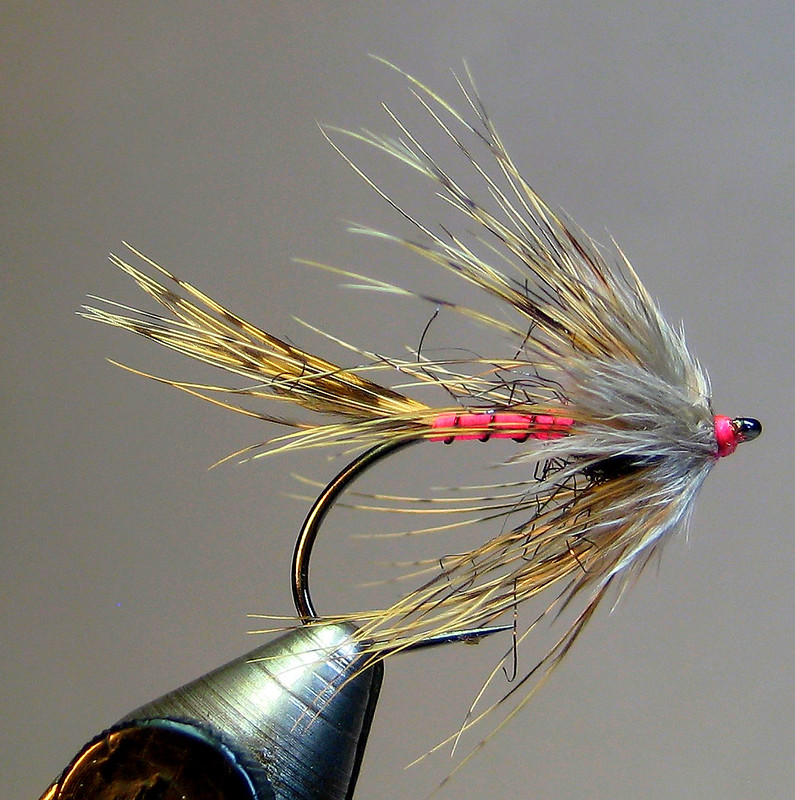
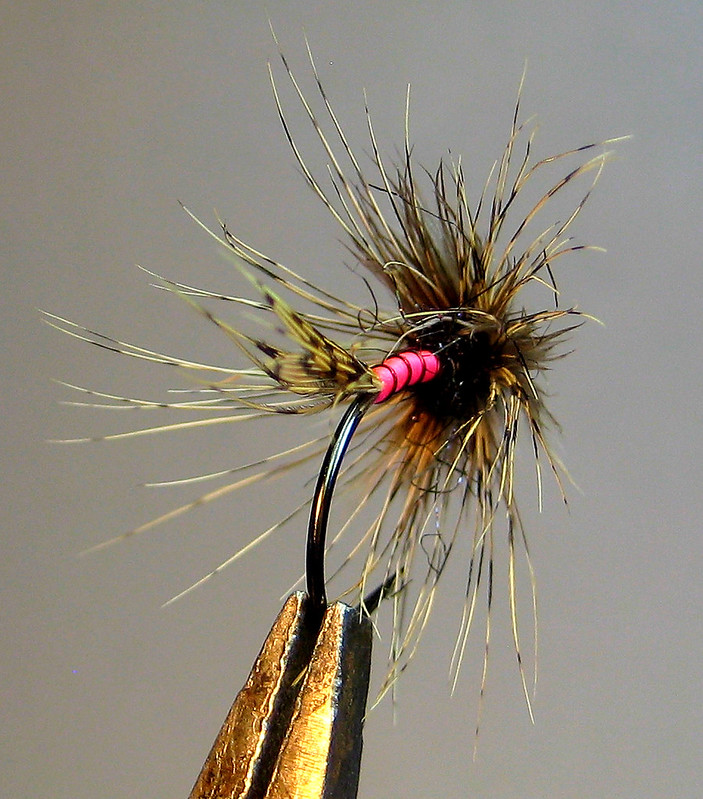

Another one for runners coming up from Hebgen into the Park; switched up a number of materials from the original but the overall effect is similar.
hook - Maruto 206bl #8
thread - Danville 6/0 fluoro pink
tail - sharptail grouse
rib - small wire black
body - Danville flat wax fluoro pink
thorax - Ice Dub black
1st shoulder - sharptail
2nd shoulder - sharptail aftershaft (loop dubbed)
Regards,
Scott



Another one for runners coming up from Hebgen into the Park; switched up a number of materials from the original but the overall effect is similar.
hook - Maruto 206bl #8
thread - Danville 6/0 fluoro pink
tail - sharptail grouse
rib - small wire black
body - Danville flat wax fluoro pink
thorax - Ice Dub black
1st shoulder - sharptail
2nd shoulder - sharptail aftershaft (loop dubbed)
Regards,
Scott
Those look great.
I wish I could get palmered mallard to look like that. Mine just never look good.
Anything you do special to get it to look so nice?
SF
Scottp
Legend
Agreed; I can get woodduck flank to listen once in a while but rarely mallard.Those look great.
I wish I could get palmered mallard to look like that. Mine just never look good.
Anything you do special to get it to look so nice?
SF
Regards,
Scott
Jack Devlin
Life of the Party
Mallard and other Duck feathers can be a bit unruly sometimes. I know what you mean. It has a lot to do with the shape of the feather's shaft, I think.Those look great.
I wish I could get palmered mallard to look like that. Mine just never look good.
Anything you do special to get it to look so nice?
SF
Pick a symmetrical feather to begin with and prepare it in the standard way. Choose a section of the feather where all the barbs are as close to the same length as possible. Tie in by the tip and constantly fold the barbs back as you wrap forward in slightly overlapping turns - about four or five turns in the case of the Cutthroat Spider. You can keep stroking the feather back after it is tied in. A little saliva helps the feather "memory".
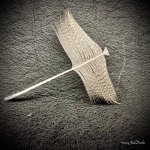
Some remove the barbs from one side of the feather.
Another way is to use scissors to rub along the feather shaft and fold the barbs.
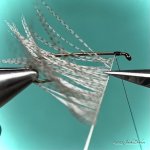
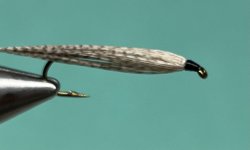
Those look great.
I wish I could get palmered mallard to look like that. Mine just never look good.
Anything you do special to get it to look so nice?
SF
Last edited:
Mallard and other Duck feathers can be a bit unruly sometimes. I know what you mean. It has a lot to do with the shape of the feather's shaft, I think.
Pick a symmetrical feather to begin with and prepare it in the standard way. Choose a section of the feather where all the barbs are as close to the same length as possible. Tie in by the tip and constantly fold the barbs back as you wrap forward in slightly overlapping turns - about four or five turns in the case of the Cutthroat Spider. You can keep stroking the feather back after it is tied in. A little saliva helps the feather "memory".
Some remove the barbs from one side of the feather.
View attachment 35439
Jack,
Thanks for the tips.
Much appreciated.
SF
SpeyrodGB
Steelhead
Mallard and other Duck feathers can be a bit unruly sometimes. I know what you mean. It has a lot to do with the shape of the feather's shaft, I think.
Pick a symmetrical feather to begin with and prepare it in the standard way. Choose a section of the feather where all the barbs are as close to the same length as possible. Tie in by the tip and constantly fold the barbs back as you wrap forward in slightly overlapping turns - about four or five turns in the case of the Cutthroat Spider. You can keep stroking the feather back after it is tied in. A little saliva helps the feather "memory".
Some remove the barbs from one side of the feather.
View attachment 35441
Have you ever used your tying scissors to gently scrape the side of the stem a few times? The scraping helps fold the hackle fibers. I have also found the thinner stems palmer easier.
Jack Devlin
Life of the Party
Oh yes, that works. Squeezing the barbs between index finger and thumb while folding back works too.Have you ever used your tying scissors to gently scrape the side of the stem a few times? The scraping helps fold the hackle fibers. I have also found the thinner stems palmer easier.
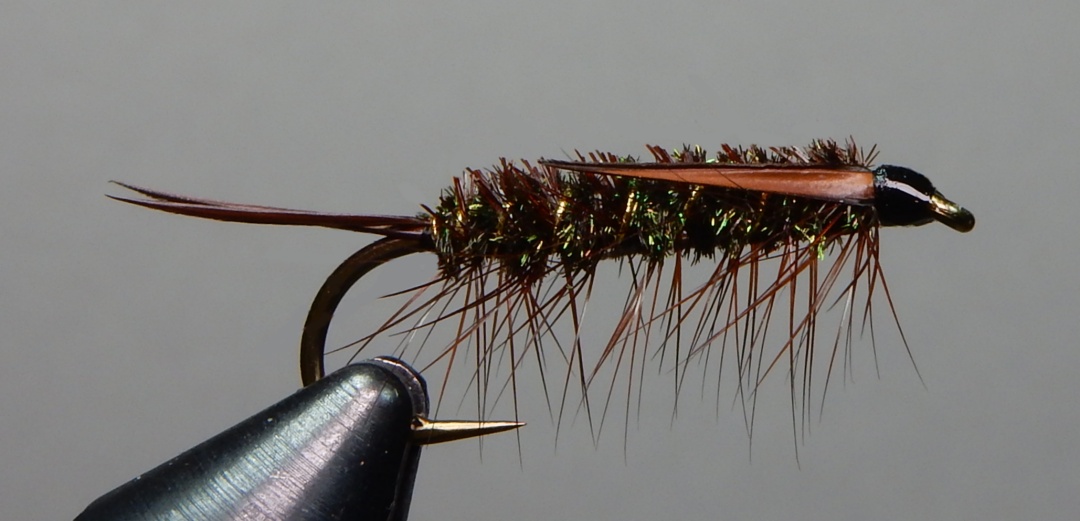
Leib's Bug
Don Leib
Hook - Mustad 9672 or equivalent, size 6-12
Weight - Lead free wire
Thread - Black
Tail - Brown goose biots tied in a "V"
Ribbing - Oval gold tinsel
Body - Peacock herl
Hackle - Brown. Clip off on top
Legs - Brown goose biot tied in on each side so tips flair out
Popular Fly Patterns - Terry Hellekson
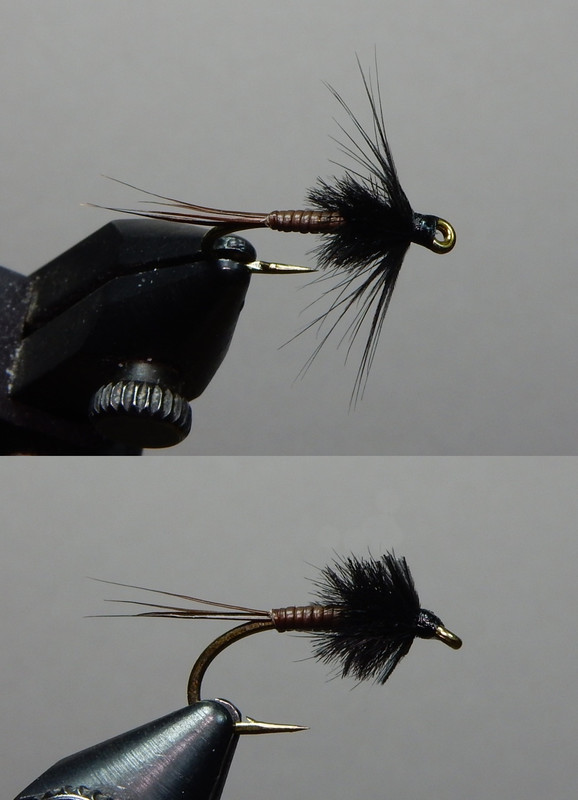
Pig Nymph - Black
Hooks - TMC3761 or DAI1560 or equivalent, sizes 12-16
Thread - Black
Tail - Three dark peccary hairs
Abdomen - Wrapped with dark peccary hair
Thorax - Black ostrich herl
Legs - Black hen hackle tied on as a collar and trimmed off on top and bottom
Doug Prince of Monterey, California, originated this pattern. In view of the fact that peccary is not always available, many fly tiers have found that moose is just as effective.
Fish Flies: The Encyclopedia of the Fly Tier's Art - Terry Hellekson
Scottp
Legend
Autumn Muddler
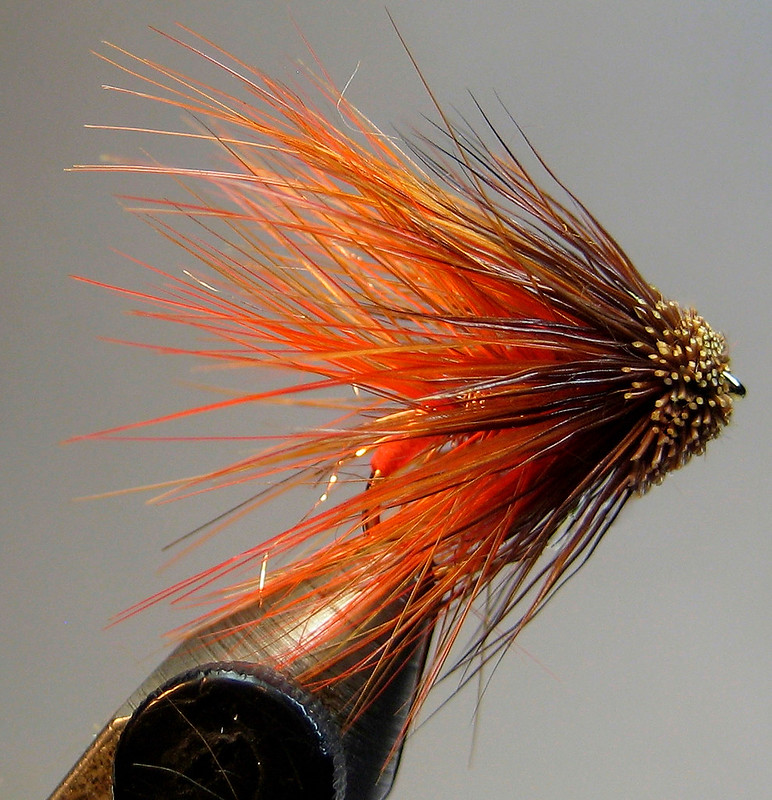
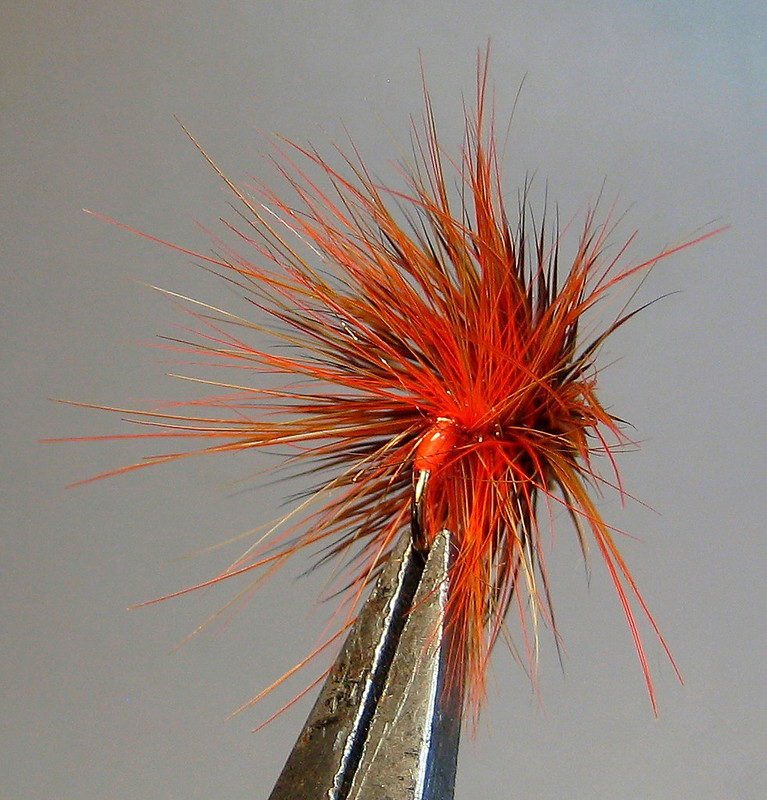
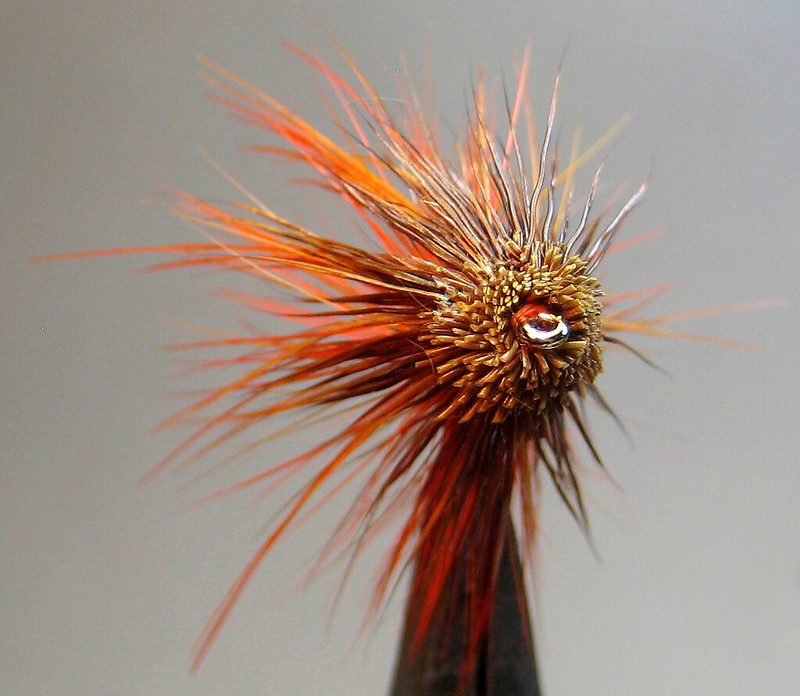
hook - WFC Model 6 #10
thread - Uni 8/0 fire orange
tag - Orvis Saltwater thread fluoro orange/resin
rib - small wire copper
body - Starburst copper
body hackle - brown/hot orange
shoulder - golden pheasant body feather red
collar/head - deer hair dyed brown (2 Tsp Rit Golden Yellow, 1/4 Tsp Rit Dark Brown/2 cups water)
Regards,
Scott



hook - WFC Model 6 #10
thread - Uni 8/0 fire orange
tag - Orvis Saltwater thread fluoro orange/resin
rib - small wire copper
body - Starburst copper
body hackle - brown/hot orange
shoulder - golden pheasant body feather red
collar/head - deer hair dyed brown (2 Tsp Rit Golden Yellow, 1/4 Tsp Rit Dark Brown/2 cups water)
Regards,
Scott

